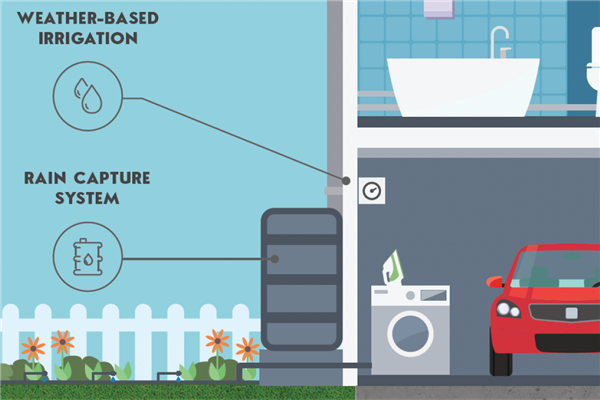Water Efficiency

Water is a finite resource, there is only so much and no more. Ongoing drought conditions along with growing demand from new and expanding communities, industry, and agriculture put increasing pressure on this vital resource. Every drop of water counts!
Flow and flush fixtures with the EPA WaterSense® label are one way to improve indoor water efficiency. Installing low flow faucets, showerheads, and high efficiency toilets are some of the easiest and most DIY-friendly ways to make your home more water efficient.
Find and fix leaks by listening for and repairing dripping faucets and running toilets.
Water efficient appliances, including high efficiency dishwashers and clothes washers, can use up to 40 percent less water and less energy than standard models. Run your dishwasher and clothes washer with full loads only.
On-demand hot water recirculation pumps that can be controlled by the push of a button or a motion sensor solve the problem of a long wait for hot water at a distant fixture and save water by eliminating the need to send cold water down the drain while waiting for warm water.
Outdoor water use reductions can be achieved while still maintaining a vibrant and healthy landscape.
• Replace turf and use drought tolerant plants.
• Install drip irrigation with a smart, weather-based irrigation controller.
• Regularly adjust sprinkler heads and fix leaks to be sure water is going where it’s supposed to. Because of repeated use, sprinkler nozzles can come loose and become turned, spraying in the wrong direction.
• Apply mulch 2-to-4 inches deep in all planting areas.
• Rainwater harvesting systems with rain barrels or cisterns can be installed to collect rainwater from impervious surfaces such as roofs and patios to be used for irrigation.
• Greywater systems including laundry-to-landscape systems use wash-water from your washing machine to irrigate your landscape. This is the simplest, most cost-effective type of greywater system, and does not require a building permit, making it an excellent place to start! Greywater systems where wastewater is collected from showers, bathtubs, bathroom sinks, and clothes washing machines are another good option but are more complex and do require a plumbing permit.